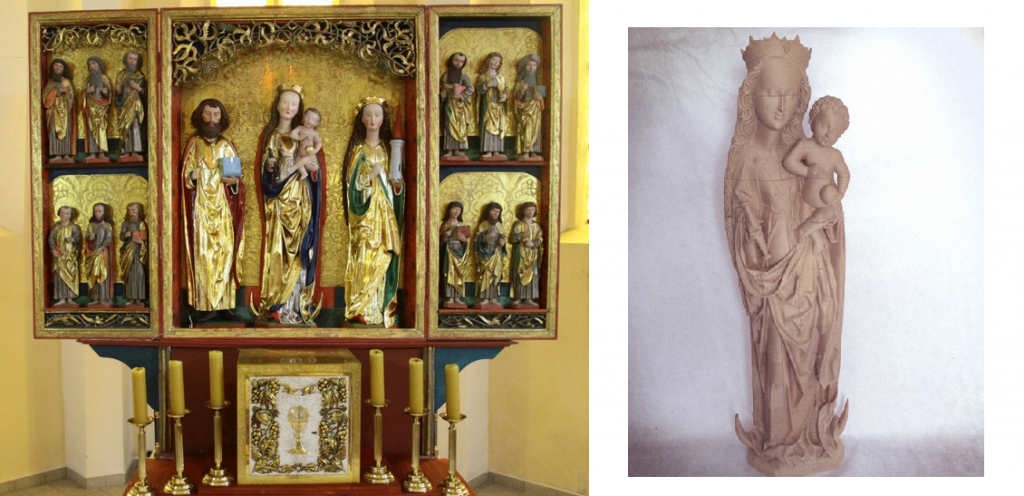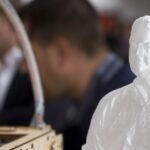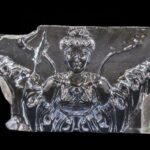

Beautiful artwork has historically always been displayed in religious venues. From the inspiration of Michelangelo’s work on the Sistine Chapel 500 years ago to the modern works being completed today, artists throughout history have continually created ornate expressions of art to depict and tell the rich histories and stories of many different religions. Virtually every medium has been used to decorate religious buildings, but painting and sculpture reign, as do paneled displays, scenic representations, and dioramas.
Artists throughout the ages often were commissioned (and sometimes ordered) to create lavish artworks that came at some amount of angst and suffering, and painstaking tedious work, bordering on the miserable as documented by Michelangelo in poetry outlining his torture. Throughout the ages though, artwork has been in continual transformation in style and technique, and it is the rare artist today who is suffering and forced to delight us with his craft. It is almost always coming from the individual pursuing their passion and feeling delight as the public enjoys their expression. With the advent of 3D printing in art, a whole new level of precision — and fun — has been put into artistic design, and thanks to Fucco Design may very well change the face of how churches decorate.
Poland-based Fucco Design has used the technology of 3D printing to create some very impressive works in a demonstration of what may be a much more affordable way to bring beauty and prayer together in the future. The team began by scanning figures, slicing the objects, and having them printed in multiple parts, using three different 3D printers:

- Replicator 2
- Ultimaker Classic
- Fucco Design’s ‘Exxtrudo’
What makes the figures doubly unique is the use of ColorFabb‘s woodFill filament, which they used for the entire printing process. While this particular filament can be challenging to work with according to many enthusiasts, the efforts are well-rewarded at the end. With over 600 hours logged into completing this printing project, it’s obvious that the designers at Fucco were heavily committed to the project overall, as well as the use of woodFill in their choice of materials.
The areas such as face and hands required more detail, so while the other parts of the sculptures were printed at 0.3 mm printing layers, the detailed parts were printed at 0.1 mm. Made up of 78 elements, the figure is 153 cm high when put together, with each having total dimensions of approximately 18 x 15 x 18 cm. Each element took between 4 and 14 hours to print, with most pieces averaging 8 hours. Michelangelo would be impressed… but of course he probably had designs for a 3D printer lying around somewhere that we have not yet discovered.
Do you think we will be seeing a lot of religion-based 3D printed sculptures and art? Have you experimented with woodFill? Please share with us in the 3D Printed Religious Sculptures forum thread over at 3DPB.com.
If you're looking to get architectural 3D animation in the USA, our service provides an exceptional way to bring your architectural concepts to life through dynamic, immersive visuals. Through our platform, you can easily request high-quality 3D animations that showcase your designs in motion, offering a detailed view of your project from multiple angles and perspectives. Whether it's for a real estate development, a commercial building, or an urban planning project, our expert team ensures that every detail is captured in a visually compelling animation.
Through our website, you can seamlessly get architectural 3D animation tailored to your project’s specific needs. With our help, you can offer potential clients or investors an engaging experience that goes beyond static images. By integrating CGI animations with real-world settings, lighting, and textures, our team creates a lifelike experience that allows your audience to interact with your project as though it were already built. This service is perfect for presenting complex designs in a clear, visually attractive way that stands out in the competitive architectural market.




